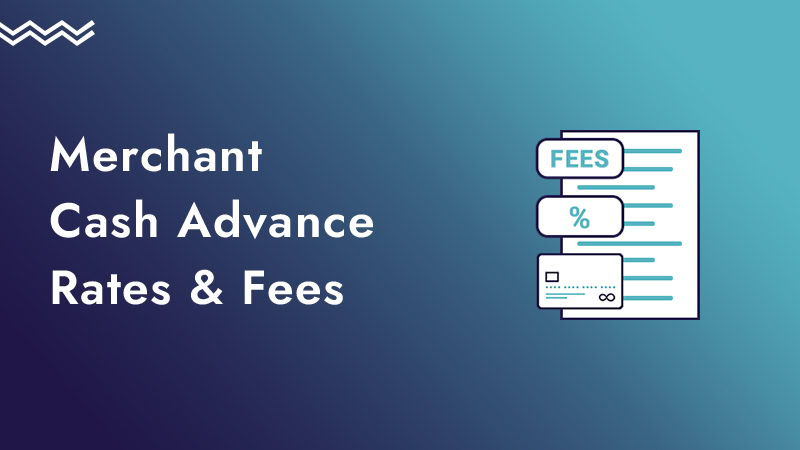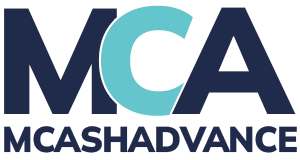
Merchant cash advance (MCA) rates can be hard to understand, especially when you’re comparing them to interest rates on traditional loans. Unlike loans, MCAs use a pricing model built around factor rates, and the total cost can vary based on how you repay and what fees are involved.
As a direct MCA provider, we work with small businesses every day, and we often hear the same questions: How is a factor rate different from an interest rate? What fees should I expect? What determines the rate I’m offered?
In this article, we’ll walk you through how MCA rates work, how they compare to loan interest rates, what a factor rate really means, and what fees you need to watch out for. We’ll also show examples, so you can see what your repayment might look like before you apply.
Interest Rates vs. Factor Rates
Interest Rates Explained
Traditional business loans use interest rates to calculate how much you’ll pay over time. You borrow a lump sum, called the principal, and pay interest on the remaining balance as you repay the loan monthly.
Here’s how that works: Example
If you borrow $20,000 at 9.5% interest over 3 years:
| Year | Beginning Balance | Interest Paid | Ending Balance |
|---|---|---|---|
| 1 | $20,000.00 | $1,718.71 | $15,030.71 |
| 2 | $15,030.71 | $1,275.99 | $9,618.70 |
| 3 | $9,618.70 | $818.30 | $0.00 |
Your total interest would be $3,813.00. These payments are amortized, meaning you pay more interest up front, then gradually pay down the principal.
Factor Rates Explained
MCAs don’t charge interest over time. Instead, we use a factor rate, a flat multiplier that determines how much you repay, regardless of how long it takes.
If your MCA offer has a 1.3 factor rate, you’ll repay 1.3 times the amount you’re funded. That means a $20,000 advance would require $26,000 in total repayment.
Here’s a quick breakdown:
| Advance Amount | Factor Rate | Fee | Total Repaid |
|---|---|---|---|
| $20,000 | 1.1 | $2,000 | $22,000 |
| $20,000 | 1.2 | $4,000 | $24,000 |
| $20,000 | 1.3 | $6,000 | $26,000 |
| $20,000 | 1.4 | $8,000 | $28,000 |
| $20,000 | 1.5 | $10,000 | $30,000 |
Factor rates are easy to calculate, but they don’t adjust for time. Whether you repay in 6 months or 12 months, the total owed stays the same, unless your provider offers an early repayment discount.
What Is a Holdback Rate?
The holdback rate is the percentage of your daily credit card sales or total revenue that we collect to repay the advance.
Most holdback rates range from 10% to 20%. That amount is automatically deducted until the full balance is paid off.
The more you earn, the faster you repay. If sales drop, your daily payments drop too, but the repayment period stretches out.
This flexible repayment structure is helpful for businesses with seasonal or inconsistent revenue. But it also means your repayment time and the true cost of your MCA can vary.
APR vs. Factor Rate: What’s the Real Cost?
While factor rates are fixed, APR (Annual Percentage Rate) accounts for time. If you repay an MCA quickly, the implied APR is higher. If repayment takes longer, the APR drops, but your daily cash flow stays impacted for a longer time.
Here’s how that plays out:
- $20,000 at a 1.3 factor rate = $26,000 total
- Repaid in 6 months → effective APR ≈ 60%
- Repaid in 12 months → effective APR ≈ 30%
- A $20,000 loan at 9.5% over 3 years = ~$3,800 in total interest (~10% APR)
That’s why it’s worth calculating your effective APR before accepting an offer, even if the factor rate looks reasonable on paper.
Some providers offer an early repayment discount, but many do not. Ask before signing, especially if you think you’ll repay early.
How MCA Repayment Works
MCA repayments are not fixed monthly amounts. Instead, repayment is based on your sales and collected through one of two methods:
1. Credit Card Split
A percentage of each card sale is automatically withheld by your processor and sent to us. This method adjusts with your revenue, so slower days mean smaller payments.
2. ACH Debit
A fixed amount is deducted from your business bank account each day (or each week). ACH doesn’t adjust with revenue, so it may feel tighter if your sales drop temporarily.
If you use ACH, some providers charge a monthly program fee, typically $25–$50. That cost should be factored into your total repayment analysis.
What Affects Your MCA Rate?
We base your factor rate on a range of business performance indicators, including:
- Monthly revenue
- Credit card processing volume
- Time in business
- Credit score
- Industry risk
- Average transaction size
- Sales consistency and seasonality
Higher risk businesses usually receive higher factor rates. If your numbers are strong, you may be able to negotiate your rate or fees. Comparing multiple offers can also help you avoid overpaying.
Other Fees to Watch For
While the factor rate is the most visible cost, it’s not always the only one. Here are some of the fees you may encounter:
Origination Fee
Charged when your MCA is funded. Usually 1% to 5% of the advance amount. This may be subtracted from your funding or added on top.
Underwriting / Admin Fee
Covers processing and approval work. Sometimes bundled with origination.
ACH Program Fee
Monthly fee for ACH repayment plans. Common if card split isn’t used.
Early Repayment Penalty
Some providers charge a fee if you repay early. Others won’t penalize you, but they won’t discount your repayment either. Always clarify this.
Renewal Fee
If you apply for a second MCA before paying off the first, a renewal or re-up fee may apply.
Default / Collection Fees
If you miss payments or violate terms, recovery fees or legal costs may be triggered. Some agreements include a confession of judgment, which allows the provider to secure a court ruling without a hearing.
MCA vs. Loan Duration
A traditional business loan usually runs 3 to 10 years and follows a fixed repayment schedule.
An MCA is short-term. Most are repaid in 3 to 18 months, depending on how your business performs. If your sales are strong, you may finish quickly. If not, it can take longer.
That variability affects both your cash flow and your cost. A slower repayment timeline reduces your APR but extends the impact on your daily sales.
Understanding MCA pricing means more than just looking at the factor rate. The holdback percentage, your sales volume, the repayment method, and any fees all shape your true cost.
Before you apply, take a few minutes to:
- Run the numbers using your own sales
- Ask about early repayment policies
- Check for ACH fees or processing charges
- Compare offers if you’re unsure
We’re here to help you weigh the options clearly, no pressure, just straight answers.
At MCashAdvance, we believe in full transparency. We don’t charge origination fees, underwriting fees, admin fees, early repayment penalties, or renewal fees. What you see in your offer is what you’ll pay, nothing hidden, nothing added later.
Ready to Apply?
or learn more about MCA Advance

